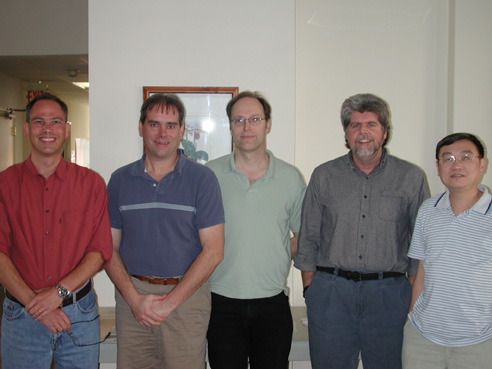NCEAS Working Groups
Global change impacts on landscape fires
Project Description
A major problem in projecting ecological change and understanding its mechanisms is the lack of non-equilibrium dynamics in ecological models. The inclusion of disturbance, especially fire is essential for dynamic vegetation models to simulate transient changes in vegetation composition and structure. Understanding landscape dynamics in relation to fire, and how these dynamics may be altered by climate and land use changes is a priority. The development of fire-vegetation models at landscape scales is a crucial gap in land management. Additionally, understanding human impacts on the fire regime is critical for projecting vegetation change in human-modified landscapes, which now occupy large proportions of the globe. The objective of this working group is to use the current well-developed understanding of fire behavior/fire ecology and fire-weather to develop a set of dynamic fire-climate-vegetation models that simulate fire effects at temporal and spatial scales relevant to vegetation change. We will use a common modelling environment, LAMOS, to conduct this research. LAMOS (a LAndscape Modelling Shell) is an interactive and flexible landscape modelling platform designed to include alternative methods for simulating vegetation response to landscape change. This proposal specifically addresses three questions: 1) How well do different landscape fire models reproduce fire statistics under current climate, both with respect to each other and with respect to fire history records at selected sites, 2) At what spatial and temporal scales does landscape pattern influence the fire regime, and 3) Under which weather conditions are fire patterns sensitive to fuel landscape pattern, and how often under present / future climate is the threshold of sensitivity crossed.

Principal Investigator(s)
Michael Flannigan, Sandra Lavorel
Project Dates
Start: October 30, 2000
End: January 23, 2004
completed
Participants
- Geoff Cary
- Australian National University
- Ian Davies
- Australian National University
- Andrew Fall
- Simon Fraser University
- Michael Flannigan
- Canadian Forest Service
- C. J. Fotheringham
- University of California, Los Angeles
- Robert H. Gardner
- University of Maryland
- William A. Hoffmann
- Universidade de Brasília
- Robert Keane
- USDA Forest Service
- Jon Keeley
- US Geological Survey (USGS)
- Sandra Lavorel
- Centre d'Ecologie Fonctionnelle et Evolutive-Centre national de la recherche scientifique CEFE-CNRS
- Jim Lenihan
- Unknown
- Chao Li
- Canadian Forest Service
- Florent Mouillot
- Carnegie Institution
- Scott Rupp
- University of Alaska
- Michael Wotton
- Canadian Forest Service
Products
-
Presentations / 2003
Comparison of the sensitivity of landscape-fire-succession models to terrain, fuel pattern, climate and weather
-
Journal Article / 2006
Comparison of the sensitivity of landscape-fire-succession models to variation in terrain, fuel pattern, climate and weather
-
Presentations / 2001
Climate change, forest fires and carbon in northern forests
-
Presentations / 2002
Climate change and fire: Where we are going
-
Data Set / 2008
FRAME Fire Research and Management Exchange System
-
Presentations / 2003
A classification of landscape fire succession models
-
Journal Article / 2003
Using simulation to map fire regimes: An evaluation of approaches, strategies, and limitations
-
Journal Article / 2004
A classification of landscape fire succession models: Spatial simulations of fire and vegetation dynamics
-
Book Chapter / 2007
Understanding global fire dynamics by classifying and comparing spatial models of vegetation dynamics
-
Journal Article / 2013
Exploring the role of fire, succession, climate, and weather on landscape dynamics using comparative modeling
